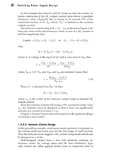samEEEf
Full Member level 2

I've found two equations in two different books to determine the required inductance for a LC filter.
Marty Brown - Power Supply Cookbook (2nd Edition) - [p.46, Eq. 3.32]
Lmin=(Vinmax-Vout)*Toff/(1.4*Iout)
Switching Power Supply Design, Third Edition - [p.74, Eq. 2.20]
Lo=0.5*Vo*T/Ion
Which equation should we consider?
[Reference updated]
Marty Brown - Power Supply Cookbook (2nd Edition) - [p.46, Eq. 3.32]
Lmin=(Vinmax-Vout)*Toff/(1.4*Iout)
Switching Power Supply Design, Third Edition - [p.74, Eq. 2.20]
Lo=0.5*Vo*T/Ion
Which equation should we consider?
[Reference updated]
Last edited:



